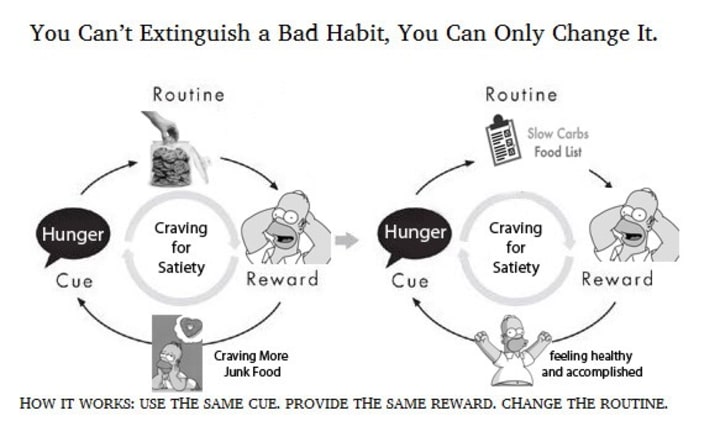The Power of Habits by Charles Duhigg
A life changing agent not only for an individual but also for an organization and a community

The Power of Habit by Charles Duhigg is one of the most powerful books ever written in the history of the science of habit. It is the Newyork Times bestseller and the wall street journal’s one of the best books of the year.
Born in 1974, Charles Duhigg is an acclaimed journalist of the Newyork Times and a nonfiction writer. No one before him has brought the field so vividly to the public and been able to describe the complex matter with such ease in simple words for general people.
This book has revolutionized habit-related studies and added a new dimension to the existing research. It has totally brought new perspectives about forming, changing or replacing a habit. We will explore all these steps by the steps below.
How the Science of Habit Was Originated
The beginning of the book focuses on how the science of habit was originated in the 1990s when doctors were treating a patient named Eugene who had been suffering from chronic brain-related complexities.
The doctors and researchers at the hospital astoundingly observed that a severely dangerous virus causes a significant amount of damage to the brain but Eugene still can do the routine work like sleeping, eating correctly.
Then, they discover that the only portion remaining unharmed in the brain is the one that is responsible for tackling habits or routine activities. This portion is called the basal Ganglia which is the mystery behind all habits.

Then, a new branch of study, The Science of Habit, was formally established in The Massachusetts Institute of Technology (MIT) in the early 1990s to conduct the research thoroughly.
The Whole Book
The whole book is divided into three parts. The first part deals with the habits of individuals, the second is about the habits of successful organizations and the third part describes the habits of societies. We will try to explore each part as clearly as possible.
In the first part, the habits of individuals, there are three chapters; the habit loop, the craving brain and the golden rule of habit change.
Part One
The First Chapter: The Habit Loop
The first chapter deals with how a habit is formed, which is also called the habit loop. The habit loop has three important elements; cue, routine and reward. These three important factors help to form a habit. Cue is the thing that creates a craving in the brain for doing an activity repetitively.

For example, you love to eat burgers from a restaurant by the road because of the smell which is so widespread around the area that anyone passing by the street cannot but stop and take one. Here the smell is the cue that creates a craving among the passers. Cue is a strong factor that makes a person do an activity again and again. In this case, the mouth-watering smell of the burgers. Cue turns any discrete activity into a habit because it creates the desire in a person for doing that activity repetitively. Without the cue, people do not get attracted and an iteration does not take place.
The second element is routine. For being a habit, an activity must be performed routinely. The last element is the reward. In the burger shop, if the smell is the cue, satisfying hunger is the reward. So, for developing a new habit, the first and foremost essential content is the cue without which nothing gets attracted at the first sight.
For example, we can think of TV commercials or any type of advertisement where a cue is shown at first. Cue is something that triggers a person to purchase a product as it is the reason why somebody purchases a product or avails of a service. Below is one good example.
Nike: Find Your Greatness
The Second Chapter, The Craving Brain
The second chapter, the craving brain, discusses these things clearly, focusing mainly on how to create new habits.
For example, somebody, who wants to start morning work every day, can purchase colorful Nike shoes, trousers and T-shirts of brands and get those ready before going to bed at night.
As a result, in the morning when the person gets up and sees these very close to his bed, s/he cannot ignore as these work. Cues play a vital role in making new habits.

Third Chapter: The Golden Rules of Habit Change
The third chapter deals with the golden rules of habit change which is the heart of any type of transformation. What are those golden rules?

The golden rules of habit change are; changing the routine while keeping the cue and the reward constant.
Other rules are creating strong beliefs, associating with opposite peer groups and nurturing strong willpower.
Although these are the golden rule for changing a habit, it is also equally important to get the persons aware of the change so that they can willingly take part in it. For example, a person generally drinks at 1 a.m. If he purposefully tries to change the routine and starts to drink in the morning, the habit will be obstructed.
Another important point is that if he has a strong belief and strong willpower that he can change himself, it will surely create the force to get out of the gravity of the strong habit.
The third rule is to find an opposite peer group. We know that peer pressure plays a crucial role in forming a habit in many cases. But opposite peer groups like a group comprising of non-smokers can force a smoker to give up smoking.

An important factor is finding an appropriate substitute for the cue. For example, if somebody tries to take coffee when s/he feels like smoking, it can certainly work.
That is all about the first part of the book, containing three chapters; the way a habit is formed, how to create new ones and the rules to change or substitute an existing one.
Part Two: The Habits of the Successful Organizations
Fourth Chapter: the Habits of the Successful Organizations
The second part emphasizes the habits of successful organizations. The first chapter of the second part deals with the key-stone habits.
A successful entity certainly has a set of routine activities which lead them to the top. The folks working there are trained appropriately to achieve those in the most effective ways. These set of habits are called the keystone habits which help them to stand out.

As these keystone habits directly influence the way people work, take food, enjoy, have fun, communicate, spend and, most importantly, live. Keystone habits are the prime routine activities that start a process in the company and end up transforming everything.
Chapter Five: Will power
The second chapter in the second part discusses willpower. When it becomes spontaneous and automatic, magnificent things start to happen. Even complex chronic habits start to break down.

Sixth Chapter: The Power of a Crisis
The third chapter in this part illustrates the power of a crisis. The true essence is that Leaders in an organization weave or design the set of keystone habits, most of which are discovered accidentally through a crisis.
Every crisis or adversity is an opportunity for the leaders to have a deep reflection, examine the nut and bolts and redesign the whole intricate mechanism. Organizations go and grow that way.

Companies also need to adjust their lens to predict more correctly so that new endeavors can be undertaken. That is actually the main thought of the third chapter in the second part.
Part Three: The Habits of Societies
The last part containing two chapters illustrates the habits of societies. The first chapter in this part focuses on the factors which influence a group’s habits, for example, what makes a group of people take part in a movement on the street, how this gets stronger, how emotions flow among the mass when they get together and so on.
The last chapter discusses the neurology of free will. It is a potential legal question as well. If somebody breaks the law or does a crime because of one’s habit, Can one be held responsible for one’s misdeed? That is all in a nutshell.
The Power of Habit: Why We Do What We Do in Life and Business by Charles Duhigg at Microsoft Research. Source: Microsoft Research Youtube channel
Let’s recap the whole book again,
1. Origination of the field of Habit and establishing it as Science
2. The habit Loop- Cue, Routine and Reward
3. New habit creation – Cue plays the main role for craving for something in the brain
4. Golden rules of Habit change- changing the routine, creating strong belief, substituting the cue, associating with a different peer group
5. Keystone Habits of successful organization: a set of habits that influence and shape all other factors in a powerful organization
6. Change of habits or transformation becomes easier when willpower is spontaneous and automatic
7. When a company wants to achieve a new milestone, it needs to predict its habits and take actions thereby
8. What forms the habit of a group of people
9. A debatable question: who is to blame for the damage done for wrong habits
Thanks a lot for your patient reading. If you like, please leave a heart. A tip is not necessary but an encouragement for more creation.
About the Creator
Moshiur Rahman
My mother tongue is not English. But I like to imagine, think and write in English just because it is my passion and I love to do that.
Enjoyed the story? Support the Creator.
Subscribe for free to receive all their stories in your feed. You could also pledge your support or give them a one-off tip, letting them know you appreciate their work.






Comments
There are no comments for this story
Be the first to respond and start the conversation.